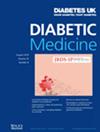Diabetes and risk of hospitalisation due to infection in northeastern Thailand: Retrospective cohort study using population-based healthcare service data
Abstract
Background
Population-based studies describing the association between diabetes and increased risk of infection have largely been based in high-income countries. There is limited information describing the burden of infectious disease attributable to diabetes in low and middle-income countries. This study aimed to describe the burden and risk of infectious disease hospitalisation in people with diabetes compared to those without diabetes in northeastern Thailand.
Methods
In a retrospective cohort study using electronic health record data for 2012–2018 for 3.8 million people aged ≥20 years in northeastern Thailand, hospitalisation rates for any infectious diseases (ICD-10 codes A00-B99) were estimated and negative binomial regression used to estimate rate ratios (RR) for the association between diabetes and infectious disease hospitalisation adjusted for age, sex and area of residence.
Results
In this study, 164,177 people had a diagnosis of diabetes mellitus at any point over the study period. Infectious disease hospitalisation rates per 1000 person-years (95%CI) were 71.8 (70.9, 72.8), 27.7 (27.1, 28.3) and 7.5 (7.5, 7.5) for people with prevalent diabetes, incident diabetes and those without diabetes respectively. Diabetes was associated with a 4.6-fold higher risk of infectious disease hospitalisation (RR (95% CI) 4.59 (4.52, 4.66)). RRs for infectious disease hospitalisation were 3.38 (3.29, 3.47) for people with diabetes managed by lifestyle alone and 5.29 (5.20, 5.39) for people receiving prescriptions for diabetes drugs.
Conclusions
In this Thai population, diabetes was associated with substantially increased risk of hospitalisation due to infectious diseases and people with diabetes who were on pharmacological treatment had a higher risk than those receiving lifestyle modification advice alone.

 求助内容:
求助内容: 应助结果提醒方式:
应助结果提醒方式:


